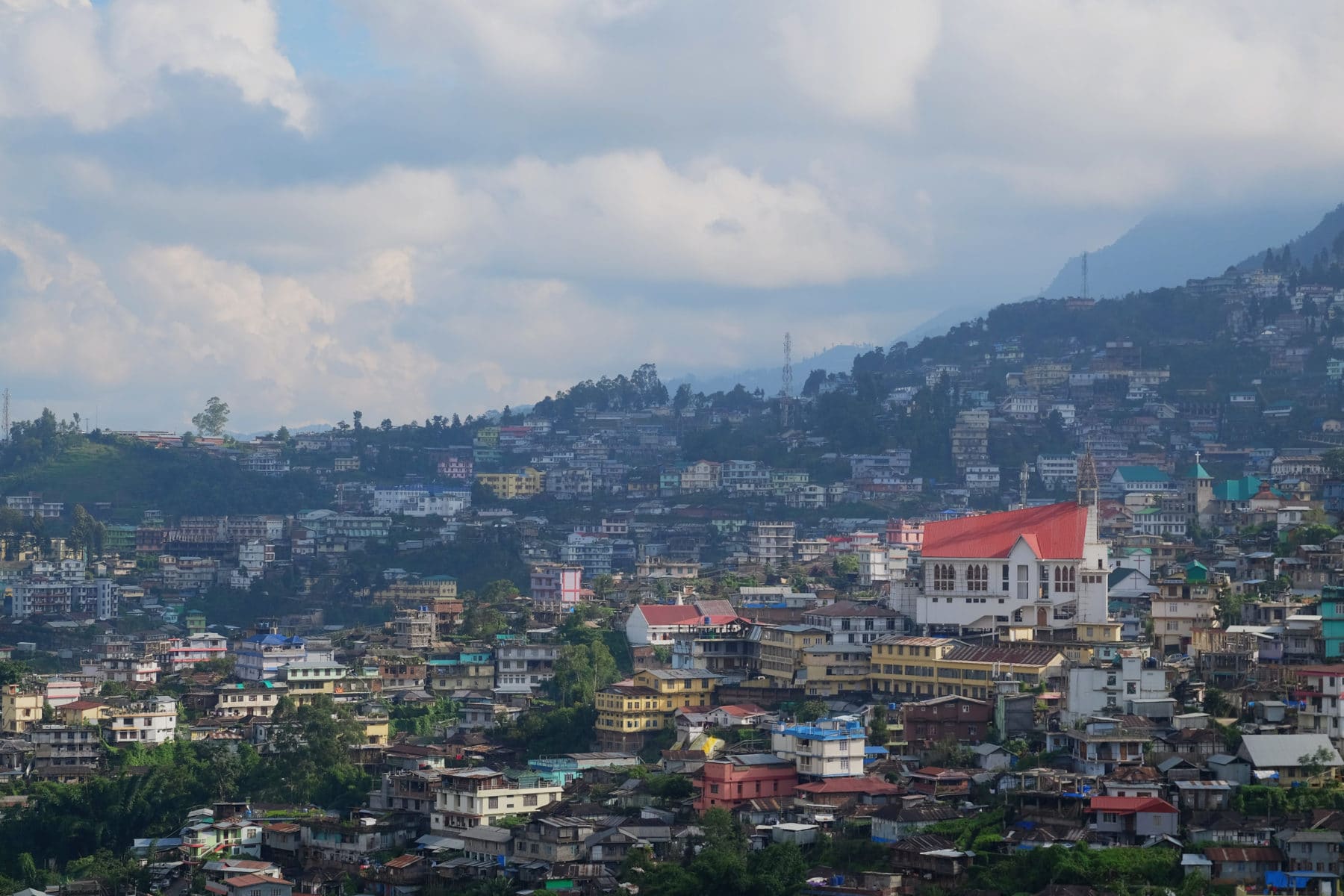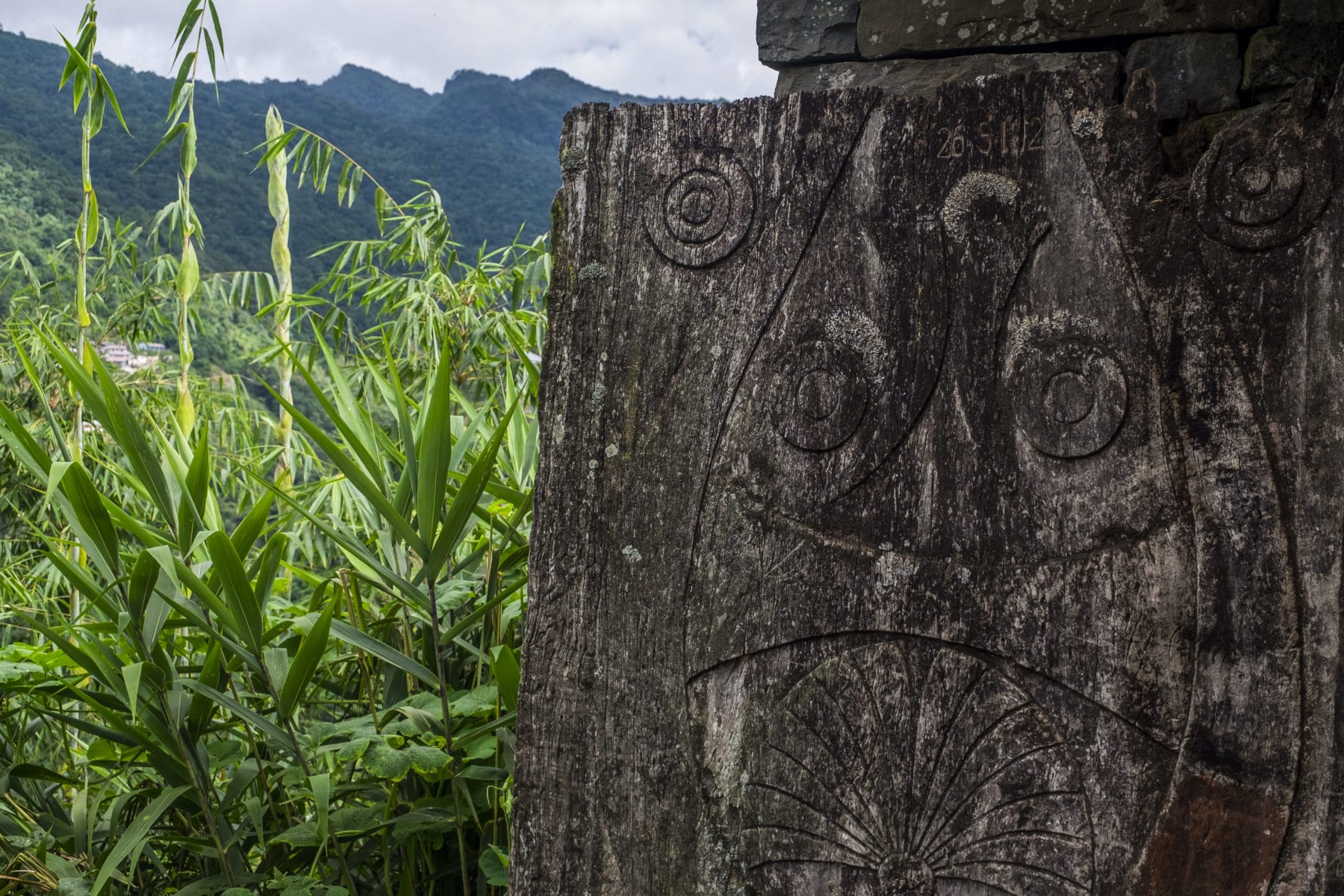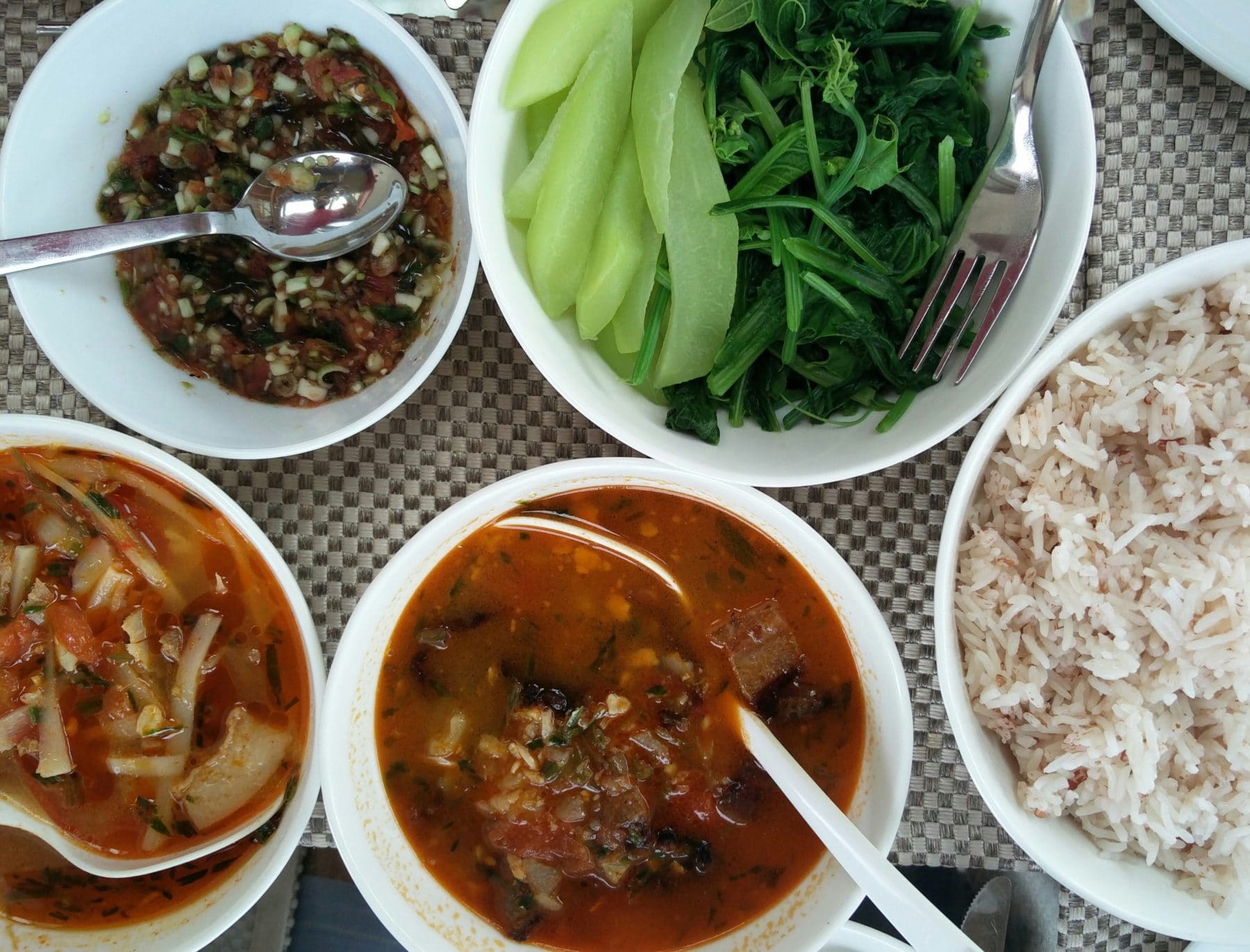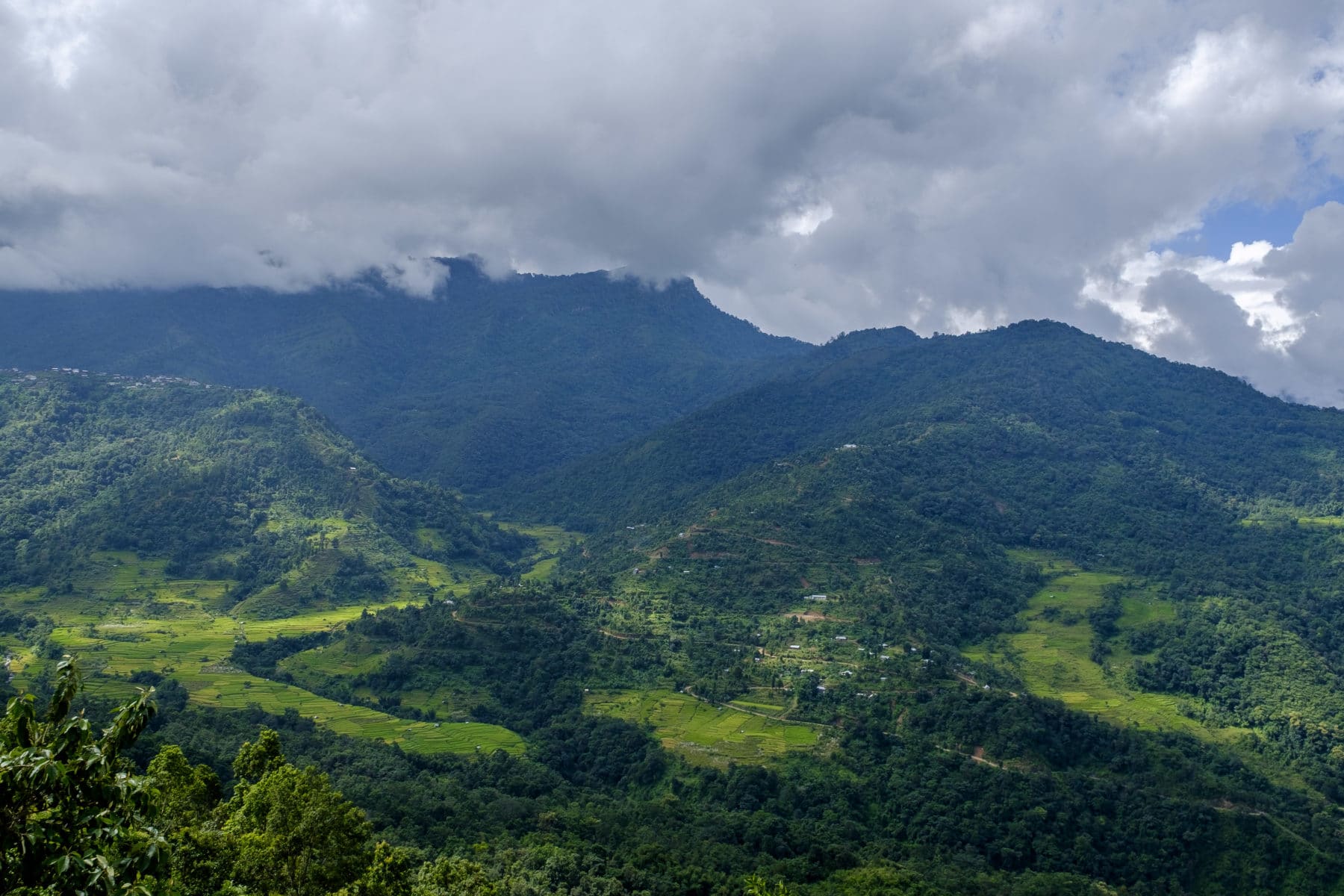Bordering Myanmar, the eastern most state of India is as far as one can get from Bombay. It is also far from Ziro, which is where we were for the wonderful Ziro festival of music, and it took two days of bumping around in a car to get to the cool hills of Nagaland. It was a beautiful drive, but then all drives in the NE region are beautiful; you are either surrounded by tea gardens or driving alongside the mighty Brahmaputra or climbing in the shadow of the eastern Himalayas. So we drove from Ziro in central Arunachal down to the plains, across Assam and into Nagaland. Crossing the border into Dimapur was a bit anti climactic, it was hot and the outskirts of Dimapur were like any town in India, dusty and crowded. As we left Dimapur behind and started the immediate climb into the famed Naga Hills, once known only as the Naga Hills of Assam to the British, it was a bit like entering the last frontier. The hills all around were lush after the monsoons, the sky was a sharp blue, and all along the drive scruffy boys waved bunches of unknown fowl at us and stalls sold vegetables and beehives ripe with Larvae. It was exciting, we were in Nagaland!

Our first stop in Nagaland was Kohima, where we plan to spend a few days exploring the busy hill city and the surrounding villages and valleys. Unlike other crowded hills stations across the country, Kohima has an unmistakable charm and vibe that takes a hold of you as you spend a few days exploring the city and beyond. The greenery all around, the many ridges that the city is spread over, the helpful folk, the easy pace of the city and the fascinating bazaars with everything from snakes to fern to the Naga chilli, all make for a great introduction to the state. With a history and social fabric as chequered as its topography, Nagaland demands time and close attention.

With sixteen official tribes and many sub-tribes, Nagaland is full of diverse customs and tribal traditions, though 99% of the state if Christian. The 16 tribes are located across the state with bigger cities like Kohima and Dimapur an amalgamation, as one would expect. Khonoma, where we spent a lovely few hours, is home to the Angami tribe, known for their martial prowess and strategic battle skills. Little Khonoma, about an hours drive from Kohima, spent decades resisting advances from the British during the mid 1800’s, till they finally made peace in the late 1800’s. Khonoma boasts three forts, tiny little look out structures that gives you commanding views of the surrounding valleys and forests. One can see for miles from the tops of these forts and it is no wonder the British faced tough resistance from the fierce and proud Angami tribe of the region, both here and elsewhere.

Walking around the village gives you a small glimpse into the lives of people who have inhabited this land for over 500 years. Khonoma is extremely green and clean, with innovative dustbins and areas for trash all along the paths of the village. All the homes, most made of bamboo and wood, with a few modern cement structures, are neat and compact. The bigger ones have flowers and trees growing in and around the houses, while the smaller ones have flower boxes and pots in their windows and balconies. The little pathways are also strewn with flowers, bamboo trees, tiny shrubs, vegetables, creepers and vines. It’s an incredibly pretty little village and walking in those tiny pathways between homes, at this high altitude, with mountain ridges in the distance is a bit reminiscent of small villages in and around the Alps. It is quite unlike anything we had seen of villages around other parts of India. There is a certain air of tranquility and peaceful slow atmosphere around. Many of the bigger homes had the unmistakable crossed wooden beams above their front entrance, which one sees in so many pictures that represent Nagaland. The crossed beams signify a wedding in the house and that the family have given at least two feasts to the entire village; thus also signifying that the particular family is fairly well off.
We noticed many of the homes had tombstones and plaques outside their house, and on enquiring were told by our guide, the entertaining Vibu, that they were for the dead, to keep them close to home. Honouring the dead and the past is important to the Nagas and ancestors are remembered in many forms. Our guide, Vibu, regaled us with stories of the village, the enterprising youth and their history, as he took us on a tour of Khonoma. The village has officially banned hunting, as has the state, as well as banned the cutting of trees. Khonoma has officially been named a ‘Green Village’, and for good reason.
It is important to have a guide when in these villages, as it allows you the opportunity to peek into peoples homes, converse with locals who might not speak english or hindi, and understand better the way of life. We ambled along with Vibu to the highest part of the village, one of the three forts, and were treated to the sight that Khonoma is most famous for. For in the valley below the village, lie row upon row of yellow and green paddy fields, in neat steps along the side of the mountain. It is an incredible sight, the beauty that arises from the practice of slash and burn cultivation, or jhum cultivation as it is called here. The paddy is in various stages of harvest, contributing to the different colours of the fields, surrounding by dark green forests. The mist suddenly rolled in and the greenery all around us was broken by patches of milky white thick mist. It was time to move ahead, Vibu has promised us lunch at a local restaurant, and after a few hours of walking around the village, we were ready to eat again. Smoked naga pork with local vegetables and red rice awaited us.

Some Useful Information:
How to get there: Khonoma is about an hour from Kohima and can be accessed by road. There is one daily local shared taxi that leaves around 1pm from TCP Junction, and returns the next day. This is a good option if you plan to spend the night in the village. If not it is better to hire your own taxi for the day and make a day trip out of it.
Where to Stay: Khonoma has a fancy new hotel called Dovipie Inn, with good clean rooms and a restaurant on the roof with killer views. You can also opt for a homestay which can be arranged through local tour operators in Kohima.
Don’t Miss: The brilliant views from Khonoma are a must see. Ensure you either engage a guide from Kohima, or hire one when you arrive in the village. You can also stop at the little village of Jotsoma enroute to Khonoma, which has some great views of the city.

Enjoying your accounts of travel in the North East. And the rediscovery project is a great idea.
Thank you! Glad you are enjoying it! 🙂
that lunch is indeed yummy…… nagaland is a beautiful place….. you have described it beautifully…..
Thank you Sudhir, we are in Nagaland for 2 more weeks and we look forward to bringing our readers many more stories from this incredible place.
we will be waiting….. you are lucky to have visited such a nice place….